A small bell-shaped fungus on fallen branches of various hardwoods, but preferably Aspen and Poplar.
Home / Mushroom Guide /
Poplar Bell
Poplar Bell
| Mushroom Type | |
| Common Names |
Poplar Bell (EN), Clychau Poplys (CY), Rozszczepka Kloszowa (PL), Pihés Gyűszűgomba (HU) |
| Scientific Name |
Schizophyllum amplum |
| Synonyms |
Auriculariopsis ampla, Merulius amplus |
| Season Start |
Sep |
| Season End |
Nov |
| Average Mushroom height (CM) | |
| Average Cap width (CM) |
0,5–1,5 |
Please note that each and every mushroom you come across may vary in appearance to these photos.
Fruiting Body
0.5–1.5 cm across, somewhat spherical first, then opens up to a cup or ear shape. Attached to the substrate in one point.
Upper surface is white to off-white, flaky at first then faintly hairy, scurfy.
Gills
Does not have gills but the fertile (inner) surface is pale, creamy brown to a fudge colour and smooth.
Flesh
Thin, soft, gelatinous and pliable when young and moist, somewhat wax-like fragile when dry.
Habitat
Saprotrophic, causing white-rot. Growing individually or in small groups on dead or dying branches and twigs of various hardwoods, but preferably Poplar and Aspen, rarely on Willows. It fruits during Autumn but can be found the throughout the year.
Possible Confusion
It is hard to confuse the Poplar Bell with anything else.
The Splitgill (Schizophyllum commune), pictured, has a much more hairy skin and longitudinally split pseudo-gills.
The Jelly Ear (Auricularia auricula-judae), is reddish brown everywhere, much bigger in size and prefers Elder.
The Crimped Gill (Plicaturopsis crispa), has white, crimped pseudo-gills and it prefers Hazel.
Taste / Smell
Inedible. Smell and taste indistinctive.
Frequency
Occasional to rare, but widespread in the southern part of the UK, rare countrywide.
Spores
Spore print is white. Spores are cylindrical to ellipsoid, smooth, non-amyloid.
Other Facts
This species can be found on the Red Data list (2006) by Evans et al as a Near Threatened species.


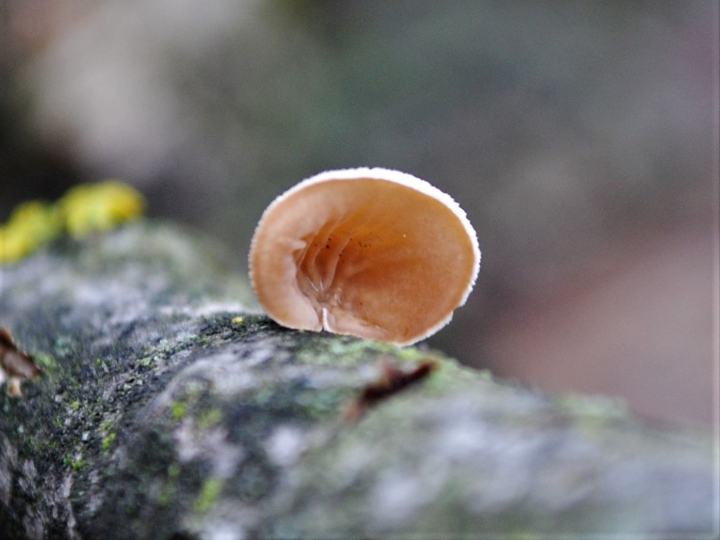
















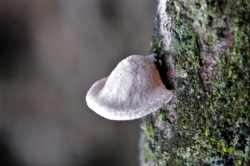
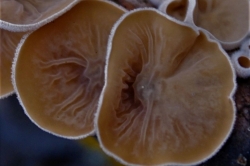
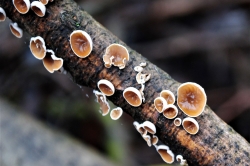
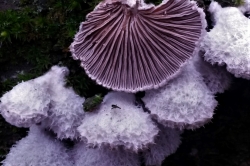






Leave a Reply